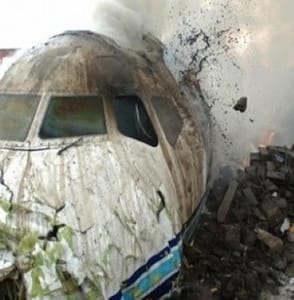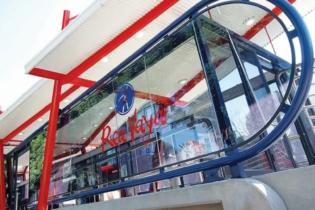Vehicle manufacturers have done their bit for South Africa through the exports of built-up vehicles. Unfortunately it’s not enough. The motor industry as a whole and the country remain deep in the red.
Between 2005 and 2010, the industry racked up a combined trade deficit of R160 billion. In 2008, when the deficit more than halved to R14.7 billion from the previous year’s R34.6 billion, there were tantalising hopes that the industry could fight its way into the black. But after taking the deficit back over R30 billion in 2010, no one is expecting the industry to be trading positively soon. Last year the motor industry exported R69.5 billion of goods but imported R100.2 billion. A R3.7 billion trade surplus for built-up vehicles was overwhelmed by a R34.4 billion deficit for components. That’s one of the reasons why the Department of Trade and Industry is so anxious to localise components sourcing within the Automotive Production and Development Programme (APDP) from 2013. This year, according to figures realeased by the National Association of Automobile Manufacturers of SA (NAAMSA), nearly 62% of cars built in SA will be exported. That is no once-off aberration: since 2008 the proportion has been consistently around 60%. In addition, 45% of SA-made light commercials will make their way to foreign markets. For medium and heavy commercials, the subject of a proposed new government development plan, the figure is less than 4%.In 1995, the year the Motor Industry Development Programme (MIDP) first began to dictate the shape of the motor industry, SA was exporting barely 15 000 built-up vehicles each year. Even in 2004, the total was only 110 000. But the export drive has taken off since then, this year the industry expects to ship over 300 000 vehicles and NAAMSA predicts this could rise to nearly 400 000 by 2013, the first year of the APDP. Of course, this is balanced out to some degree by traffic in the opposite direction. So far in 2011 nearly two-thirds of new cars sold in SA have been imported. That’s not necessarily a bad thing. The MIDP rewards export earnings with import duty rebates, so, as NAAMSA director Nico Vermeulen remarked, it can be argued that the surge in imports is a direct consequence of export successes. Manny de Canha, head of importer Associated Motor Holdings (AMH), suggests imports could one day hit 80% if Chinese brands make a concerted impact on the market. AMH, whose brands include Hyundai, Kia and Tata, accounts for about 15% of cars sold in SA. But that is only a fraction of those brought in by local manufacturers. Most produce only two or three vehicle ranges and import everything else. BMW SA imports half the cars it sells in SA, Mercedes-Benz 40%. Even mass manufacturers like Toyota SA and Volkswagen SA bring in over one-third. Despite this, there is a good chance that the vehicle assembly industry will produce another trade surplus this year. Equally, the components sector will remain deep in deficit. A number of things are required for this to change. One is greater local sourcing of components by SA vehicle assemblers. Another is increased local production of vehicles. The Department of Trade and Industry (DTI) has set the industry a target of building 1.2 million vehicles annually by 2020, the final year of the APDP. To give a measure of the challenge, the industry is currently less than halfway there. This year it expects to build about 566 000.
The two goals are interlinked. If the industry can get near 1.2 million, it will provide the volumes that could make full-scale localisation irresistible. So would export orders.
But there’s a long way to go before that. In its 2011 export yearbook, the Automotive Industry Export Council (AIEC) declares: “Capital-intensive components such as engines, gearboxes and interior electronic components are mainly imported. The industry’s reliance on global designs, technologically sophisticated plant and machinery and high-value automotive components contributes to the large outflow of foreign exchange.”
It adds: “The importation of replacement parts has increased substantially in recent years to support the increased vehicle imports.” Africa is a natural export market for both vehicles and spare parts. The problem, as always, is its slow rate of economic development. As Gilles Normand, Nissan Motor Co’s regional head for Africa, bemoaned this year: “Africa is 10% of the world’s population but less than 2% of the vehicle market.” So even though it will always be a prime export focus, for now it remains one of the SA motor industry’s least significant trading partners. Last year, SA exported automotive goods worth R8.7 billion to the rest of Africa. Of that, fractionally over R3 billion were parts and the rest vehicles. Here, at least, there was a healthy trade surplus: SA imported only R100m of African automotive goods. The local industry was also in credit in its dealings with North America, until now a favourite destination for SA-made cars. Last year it bought R16.5 billion of SA goods and sent R6.2 billion in return. That however, will change soon. From 2014, the US will build its own Mercedes-Benz C-Class cars, which will eliminate one of SA’s biggest export earners to that region. Instead, Mercedes-Benz SA has been allocated markets in Africa and Asia-Pacific. Perhaps the latter will help SA reduce its trade deficit with Asia. That region, including China, Korea and Japan, falls into the AIEC’s “Other” category. Last year SA exported R10.3 billion and imported R39.4 billion.SA’s smallest automotive trading partner is the South American Mercosur common market, and even here we were in the red: R900 million of exports and R3.6 billion in imports. And then there’s the European Union, SA’s biggest automotive trading. Last year’s exports to the EU, R33.1 billion, were 47.6% of the country’s total automotive exports. But these were dwarfed by the R50.9 billion in imports from the EU. Table 1: SA motor industry’s 10 biggest import and export markets in 2010
IMPORTS R billions EXPORTS R billions
1 Germany 30.1 1 Germany 19.5
2 Japan 17.9 2 United States 15.7
3 South Korea 5.4 3 Japan 3.4
4 US 5.3 4 Australia 3.0
5 China 5.2 5 United Kingdom 2.7
6 UK 5.1 6 Spain 2.3
7 Thailand 5.0 7 France 1.7
8 Spain 3.8 8 Poland 1.5
9 India 3.1 9 Belgium 1.4
10 Brazil 3.1 10 Zimbabwe 1.3








